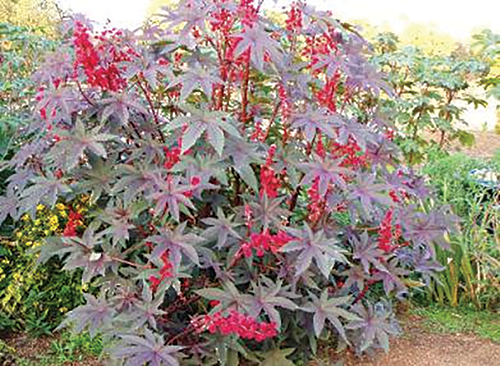Source
The castor bean plant of castor plant is found in warm tropical regions. The main toxic substance of the castor plant is ricin. Ricin is one of the most poisonous substances known to us.

The map above shows the distribution of castor plants worldwide.
Effects and Action of Ricin
Toxicokinetics
Ricin is a large protein molecule which is poorly absorbed from the gastrointestinal tract. Ricin is better absorbed through the lungs and shows its toxic effects more through this route.
Toxicity and Symptoms
Abdominal pain, burning throat pain, nausea, vomiting, bloody diarrhea leading to dehydration, hypotension, seizure and multi organ failure.
Target organs
Ricin appears to be readily absorbed by inhalation, but dermal absorption is unlikely to occur through intact skin. Intravenously administered ricin distributes primarily to spleen, kidneys, heart, and liver, and intramuscularly administered ricin distributes to draining lymph nodes.
Historical or unique exposures
There have been many historical attempts to mail letters with ricin to poison people especially those in positions of power.
Treatments
Treatments are with activated charcoal, electrolyte replacement, and IV fluids.
Biomarkers
Ricinine is the biomarker for ricin exposure
References
https://www.researchgate.net/profile/Jeffrey_Foster/publication/51487200/figure/fig5/AS:305738674130944@1449905188013/Worldwide-distribution-of-chloroplast-genotypes-of-castor-bean-from-a-collection-of-894.png
https://www.beeculture.com/wp-content/uploads/2018/10/3Krochmal.pnghttps
://youtu.be/sLiULlQMQMo
